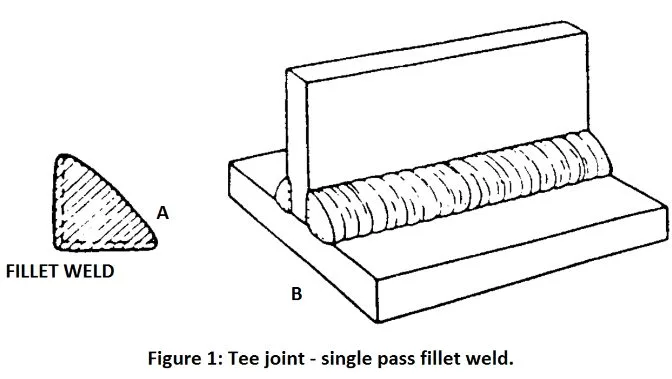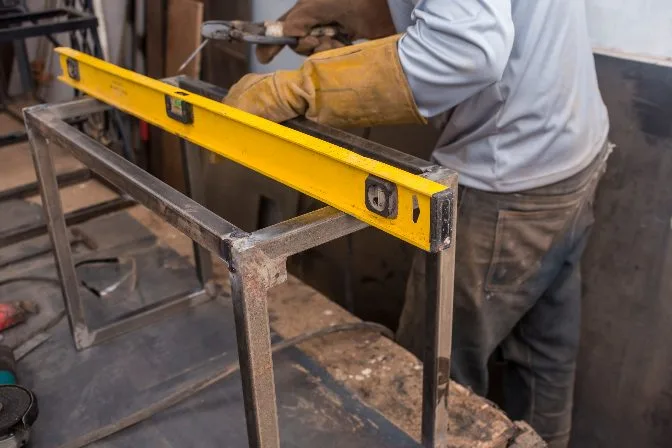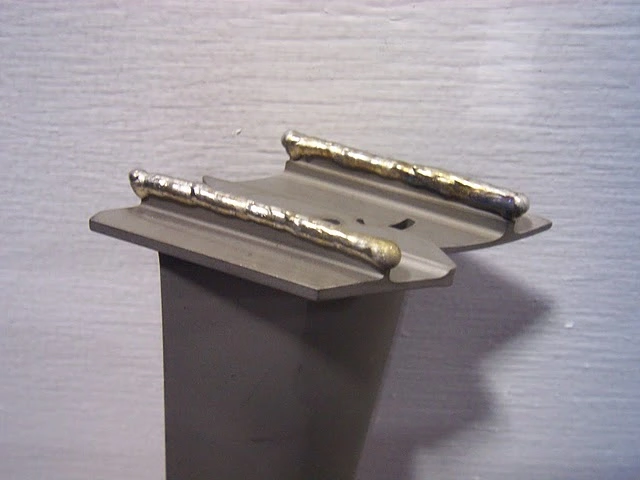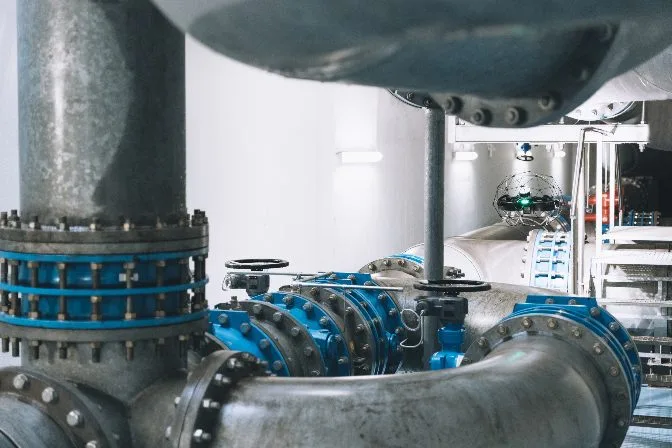Weld inspection is a critical process that ensures the quality, strength, and safety of welded joints. It involves a thorough examination of welds to identify any potential issues that could compromise the integrity of the structure or system they are part of. Trained professionals conduct these inspections throughout the welding process—before, during, and after—to ensure that every weld meets the required standards. This meticulous approach helps prevent failures, reduces risks, and maintains the reliability of the final product. Whether it's metal, thermoplastics, or another material, welds are essential in various industries such as construction, aerospace, automotive, and more. Proper inspection is vital not only for the safety of workers but also for the protection of the public, especially in high-risk environments. Welding is a process that joins materials together by melting them at their contact points. This fusion creates a strong bond that is often stronger than the original materials. The result is a joint that can withstand significant stress and load. In a typical weld, the base metal is melted along with a filler material, forming a molten pool that solidifies into a single piece. This technique is widely used across industries, from building skyscrapers to manufacturing vehicles and aircraft. Welders and inspectors are crucial in ensuring that all welding processes meet strict quality and safety standards. Their expertise helps prevent defects that could lead to catastrophic failures in critical structures. Weld inspection is essential at every stage of the welding process. Before welding begins, inspectors check materials, equipment, and procedures to ensure everything is in order. During the process, they monitor parameters like heat input and weld quality. Afterward, they verify that the final product meets specifications and is safe for use. Regular inspections help catch issues early, preventing costly repairs or dangerous failures. They also ensure compliance with industry regulations and safety codes, which are vital in high-stakes environments like oil rigs, power plants, and aerospace projects. Moreover, weld inspectors play a key role in identifying hazards such as improper shielding gas use, incorrect electrode selection, or unsafe working conditions. By doing so, they contribute to a safer workplace and reduce the risk of accidents. Effective weld inspection should occur in three key stages: pre-weld, during-weld, and post-weld. Each phase has specific tasks that help ensure the quality and safety of the final weld. Before any welding takes place, the inspector checks the materials, tools, and environment. This includes verifying that the correct base and filler metals are used, ensuring that the workspace is clean and safe, and confirming that the welder is qualified for the job. During the welding process, the inspector monitors factors such as temperature, voltage, and welding technique. They look for signs of defects like undercutting, porosity, or incomplete penetration, which could weaken the weld. After the weld has cooled, the inspector performs a detailed examination. This may include visual checks, non-destructive testing (NDT), and destructive testing if necessary. The goal is to confirm that the weld meets all required standards and is free of defects. These steps are crucial in ensuring that every weld is reliable and safe. Without proper inspection, even the best welds could fail under stress or over time. There are several types of welds, each suited to different applications and materials. Understanding these types is essential for both welders and inspectors. A butt joint is one of the most common types of welds, where two pieces of metal are joined on their edges. It’s widely used in piping systems, structural steelwork, and other applications where a strong, seamless joint is needed. Lap joints are used when two overlapping pieces need to be joined. They are commonly found in sheet metal work and are ideal for joining materials of different thicknesses. A tee joint occurs when one piece of metal is welded perpendicular to another. It’s commonly used in structural frameworks and pipe connections where a strong, stable joint is required. Corner joints are similar to tee joints but form an L-shape instead of a T-shape. They are often used in boxes, frames, and containers where two pieces meet at a right angle. Edge joints are used when two pieces are aligned parallel to each other. While not as strong as other types of welds, they are useful for reinforcing structures or adding support in certain applications. Each type of weld has its own advantages and challenges. Understanding these differences allows welders and inspectors to choose the best option for each application and ensure the highest level of quality and safety. Despite careful planning and execution, some welds may still have defects that can compromise their integrity. These faults can range from minor imperfections to major structural issues. Some of the most common faulty welds include burn-through, corrosion, incomplete penetration, lack of fusion, lamellar tearing, porosity, slag inclusions, and undercutting. Each of these issues can significantly affect the strength and durability of the weld. For example, burn-through occurs when the base metal is completely melted through, creating a hole in the weld. This is a common mistake among inexperienced welders and can lead to serious structural weaknesses. Corrosion is another issue that can affect welds over time, especially in harsh environments. If not properly addressed, it can weaken the joint and lead to failure. Incomplete penetration happens when the filler metal doesn’t fully fuse with the base metal, resulting in a weak joint. Lack of fusion, on the other hand, occurs when the weld metal doesn’t properly bond with the base metal, leading to poor adhesion and potential cracks. These defects highlight the importance of thorough inspection. Even small flaws can lead to major problems if left unchecked. That’s why weld inspectors must remain vigilant and use a combination of visual checks and advanced testing methods to identify and address any issues before they become critical. Weld inspection techniques can be broadly categorized into two types: non-destructive and destructive. Non-destructive inspection (NDT) methods allow inspectors to examine the weld without damaging the material, while destructive methods involve breaking the weld to assess its internal structure. Non-destructive testing is preferred in many cases because it preserves the integrity of the weld. Techniques such as visual inspection, liquid penetrant testing, magnetic particle inspection, radiographic testing, and ultrasonic testing are commonly used to detect surface and subsurface flaws. Destructive testing, on the other hand, is typically used for quality assurance and certification purposes. Methods like macro etch testing, transverse tension testing, and guided bend testing involve cutting or breaking the weld to evaluate its mechanical properties and internal structure. Both types of inspection play a crucial role in ensuring the quality and safety of welded joints. While non-destructive methods are ideal for routine checks, destructive testing provides deeper insights into the performance and reliability of the weld. To ensure a thorough and effective inspection, weld inspectors follow a structured checklist that covers all stages of the welding process. This checklist helps maintain consistency and accuracy, reducing the risk of missed defects or errors. Weld inspectors rely on a variety of tools and equipment to perform accurate and efficient inspections. The choice of equipment depends on the location, complexity, and accessibility of the weld. Basic tools such as flashlights, mirrors, and gauges are commonly used for visual inspections. More advanced tools like borescopes, radiograph machines, and ultrasonic devices are employed for detecting internal defects and assessing the structural integrity of the weld. In addition, protective gear such as gloves, goggles, and face shields is essential for ensuring the safety of the inspector during the process. One of the most innovative tools in modern weld inspection is the drone. Drones are increasingly being used to access hard-to-reach areas, such as the inside of large tanks, pipelines, and industrial structures. This technology allows inspectors to conduct detailed assessments without putting themselves in danger. Equipped with cameras, sensors, and even ultrasonic or LiDAR payloads, drones provide a high level of accuracy and efficiency in identifying potential issues. As this technology continues to evolve, it is expected to play an even greater role in the future of weld inspection, making the process safer and more effective for everyone involved. Galvanized Steel,Ppgi Steel Sheet Coil,Galvanized Sheet Metal,Galvanized Steel Seamless Pipe And Tube Shandong Great Steel Co.,Ltd , https://www.great-steel.comWeld Inspection: A Comprehensive Guide
What Do Welds Do?
Why Is Weld Inspection Important?
The Three Stages of Weld Inspection
1. Pre-Weld Inspection
2. During-Weld Inspection
3. Post-Weld Inspection
Types of Welds
Butt Joint Welding
 Butt joint weld
Butt joint weldLap Joint Welding
 Lap joint weld | Source
Lap joint weld | SourceTee Joint Welding
 Source
SourceCorner Joint Welding
 Corner joint weld
Corner joint weldEdge Joint Welding
 Edge weld | Source
Edge weld | SourceCommon Faulty Welds
Types of Weld Inspection
Weld Inspection Checklist
Pre-Weld Inspection Checklist
During-Weld Inspection Checklist
After-Weld Inspection Checklist
Weld Inspection Equipment
Drones as Weld Inspection Equipment
 The Elios 3 drone inspecting water pipes
The Elios 3 drone inspecting water pipes